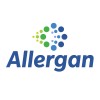
Brimonidine vs ALTP in Progressing Human Glaucoma
GlaucomaThis study is evaluating possible non-intraocular pressure (IOP) related effects of the alpha-1 agonist brimonidine in human subjects affected by a progressive glaucomatous optic neuropathy. Brimonidine was proven as neuroprotective in several pre-clinical animal studies.

A Study Comparing Xalacom And Xalatan In Patients With Primary Open Angle Glaucoma (POAG) Or Ocular...
GlaucomaOcular HypertensionThis study will examine the efficacy and safety of Xalacom comparing with those of Xalatan in Japanese patients with POAG or OH, in order to show superiority of Xalacom over Xalatan in efficacy and similarity of safety between Xalacom and Xalatan.

Amelioration of Adverse Ocular Side Effects of Glaucoma Medications in Glaucoma Patients Using Topical...
Ocular Surface DiseaseTo evaluate the safety and efficacy of 0.5% GL101 topical gel administered twice daily for 28 days in ameliorating adverse ocular side effects in patients under ongoing treatment with glaucoma medications.

"First-in-human" Study To Assess the Safety and Tolerability of PBF-677 in Healthy Volunteers
GlaucomaThe proposed trial a "Randomized, Double Blind, Placebo Controlled "first in-human" Study to Assess the Safety and Tolerability of Single Ascending Oral Doses of PBF-677 in Male Healthy Volunteers" (Protocol Code No:CUNFI-1509 EudraCT No:2015-003546-57) will be a single-centre, randomized, double-blind, dose escalation study without therapeutic benefit, in which PBF-677 will be administered as single, oral, ascending-dose to volunteers. Up to four different rising doses (100 mg, 200 mg, 400 mg and 600 mg) will be tested in groups of 8 participants; in each dose level participants will be randomized to active drug or placebo in a 6:2 fashion. As this will be the first time that PBF-677 in going to be administered to humans, as a safety measure a stepwise drug administration will be performed in each cohort. The volunteers of each cohort will be divided in 3 blocks/subgroups: Initially, one volunteer will receive active drug (subgroup 1). After 48h of safety and tolerability assessment, a second subgroup of 3 volunteers will receive 2 active drug and 1 placebo and after further 48h of safety and tolerability assessments a third subgroup of 4 volunteers will receive 3 active drug and 1 placebo. After evaluation of safety, parameters of corresponding dose level the process will replicate one week afterwards in the following dosages. The principal variable safety and tolerability of PBF-677 will be evaluated with physical records (Electrocardiogram (ECG), vital signs, blood chemistry and haematology, conducted before, during and after study course). Assessment of the pharmacokinetic profile (Maximum plasma concentration of the drug (peak) after single dose (Cmax),Time necessary to reach Cmax (tmax), Area under the time-concentration curve to "zero" to time "t" (AUC0t), and Elimination half-life (t1/2) of PBF-677 will be included as secondary variable.

Safety of GANFORT® Ophthalmic Solution in Chinese Patients With Open-angle Glaucoma or Ocular Hypertension...
GlaucomaOpen-Angle1 moreA study to evaluate the long-term safety of GANFORT® (bimatoprost 0.03% plus timolol 0.5%) in Chinese patients with open-angle glaucoma or ocular hypertension who are insufficiently responsive to topical beta-blocker or prostaglandin analogues.

Long-Term Safety of Latanoprostene Bunod Ophthalmic Solution 0.024% in Japanese Subjects With OAG...
GlaucomaOcular HypertensionThe objective of this study is to demonstrate the clinical safety of latanoprostene bunod 0.024% once daily (QD) over a 1-year treatment period.

Immediate Anterior Chamber Paracentesis With A 30-Gauge Needle for Acute Primary Angle - Closure...
GlaucomaAngle-closureThis study was to evaluate the efficacy and safety of immediate anterior chamber paracentesis (ACP) with a 30-gauge needle as an initial treatment for acute primary angle closure (APAC).

Safety and Efficacy of T-2345 Compared to Xalatan in Subjects With Primary Open Angle Glaucoma or...
Primary Open Angle GlaucomaOcular HypertensionThis is a Phase 3 study to evaluate the safety and efficacy of T-2345 dosed to one of both eyes once daily for 84 days compared to Xalatan dosed to one of both eyes once daily for 84 days in patients with elevated eye pressure.

Circular Cyclocoagulation Using HIFU With EYEOP1 Device in Glaucoma Patients
GlaucomaThe aim of the study is to evaluate the effectiveness and the safety of the cyclocoagulation using HIFU in glaucoma patients

Use of Intravitreal Aflibercept Injection for Neovascular Glaucoma
Neovascular GlaucomaThis 52 week study will assess the use of intravitreal aflibercept injections in patients with neovascular glaucoma (NVG) compared to standard of care panretinal photocoagulation. The investigators hypothesize that the neovascularization of the iris and angle present in neovascular glaucoma will resolve more quickly in eye treated with intravitreal aflibercept injection alone and result in increased comfort and preservation of visual field as compared to current standard of care utilizing pan-retinal photocoagulation. The advantages to intravitreal aflibercept injection use could include resolution of NVI/NVA (neovascularization of the iris/neovascularization of the angle) leading to quicker pain relief and quicker lowering of IOP (intraocular pressure).
